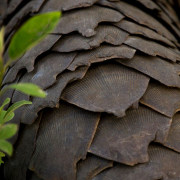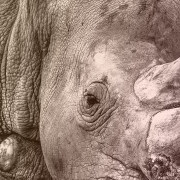|
Getting your Trinity Audio player ready...
|
Image: Wikipedia, used under a CC BY-SA 2.0 license
Swiss banks are not generally known for charitable endeavours, but have a reputation – some might say a well-deserved one – for being secretive. In fact, the country consistently appears in the top 10 of the Financial Secrecy Index, a ranking of jurisdictions that fuel financial secrecy by helping individuals to hide their finances from the rule of law, and launder money.
But one well-known Swiss financial institution – Credit Suisse – is doing good by helping South Africa to pioneer an innovative conservation strategy for one of its most endangered animal species – the black rhino (Diceros bicornis).
The world-first Wildlife Conservation Bond (WCB), or rhino bond, is a financial instrument structured by Credit Suisse and issued by the World Bank, that will channel private investments towards conservation activities in South Africa, will help close the funding gap, and importantly, will not add to the country’s debt. The bond, which matures in five years, will give investors their investment back, as well as a handsome success payment if black rhino populations increase in two of South Africa’s conservation areas, the Addo Elephant National Park and the Great Fish River Nature Reserve.
The first report-back on rhino growth rates is expected some time after March 2023.
“As South Africa we are excited to be at the forefront of an innovative new financial instrument aimed at boosting our efforts to protect the world’s largest rhino population,” said environment, forestry and fisheries minister Barbara Creecy. “We are confident that this will assist in increasing the rhino growth rate and stimulate the development of additional novel market-based mechanisms to support the objectives of the New Deal for People with Nature.”
Rhinos have been brought to the brink of extinction over the past fifty years, mainly because of poaching to supply the illegal international rhino horn trade. Like other types of illegal wildlife trade, this is fuelled by corruption that occurs at every stage of the wildlife trafficking supply chain – and it’s a big reason for the continued prevalence of wildlife trafficking routes and networks.
“Illegal wildlife trade is actually the fourth largest global crime estimated at between $7- and $23-billion per year,” said the World Economic Forum earlier this year. “Creating long-term financing solutions for conserving species and engaging people through developing livelihoods is crucial to increasing conservation efforts.”
Critically endangered
The black rhino is listed as critically endangered on the International Union for Conservation of Nature’s (IUCN) Red List of Threatened Species – just one step away from classification as extinct in the wild. Black rhinos have died out over much of central and northern Africa, and the population is now centred mainly in the southern regions of the continent. Numbers are increasing, according to a 2020 assessment by the IUCN, with 3 142 individuals tallied at the time.
Now is the time to get behind efforts to save the black rhino, and this is what the global financial institutions are aiming for.
The objectives of the bond, said the World Bank, are to secure and grow the black rhino population, protect biodiversity in the areas where rhino live, support over 2 000 jobs for the local community and improve the management of a 153 000-hectare protected area from the project’s conservation activities.
“Importantly, the WCB transaction tests a new model for conservation financing where investors accept project outcome risk in return for a potential payout if the project is successful. The structure creates an opportunity for private investment in conservation, supported by sound quantifiable metrics and models.”
Specific project activities, the World Bank added, include measures to increase supply and distribution of water, improvements in rhino protection through enhancements in staffing, equipment, facilities, training, fence upgrades, improved aerial support, communications, and national and regional coordination.
There will also be employment opportunities for local communities living around the parks in terms of construction and maintenance of park infrastructure, as well as conservation-related jobs such as park maintenance, rangers, monitors, gate guards, joint operations centre staff, and project managers.
Key innovations of the WCB include:
- Facilitating access to additional financing that South African parks would otherwise not have access to;
- Passing project implementation risk to capital market investors with donors paying only on successful outcome;
- Deployment of advanced conservation monitoring, verification and quantification tools in connection with a bond transaction.
Wildlife crime connected to other types of crime
There are strong linkages between wildlife crime and other types of organised crime, such as drug smuggling or human trafficking. A study titled Convergence of wildlife crime with other forms of organised crime, released in May 2021 by the Wildlife Justice Commission (WJC), shows that criminal networks deal in wildlife such as rhino horns, shark fins, tiger parts or timber, alongside other illicit activities such as terrorist financing, fraud, and money laundering – though overall, WJC conceded, documentation remains limited and reports are mostly anecdotal.
Environmental crime, according to a 2016 joint study by Interpol and the UN Environment Programme (UNEP), titled The Rise of Environmental Crime, has been growing at a rate of between 5 % and 7 % per year. This is 2-3 times the growth rate of the global economy, indicative of an extremely lucrative industry, with a relatively low risk of detection and if detected, likely to incur lower criminal penalties. Much of this growth has been enabled by corruption.








